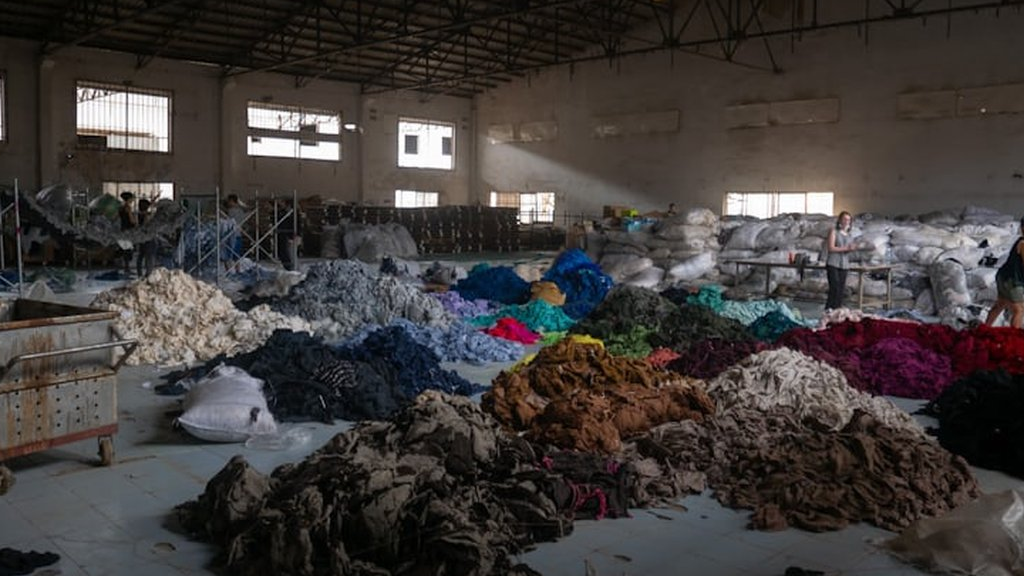 Europe stands at the brink of a transformative opportunity worth billions as Finnish research unveils the immense potential of recycling in repatriating production chains. With 10 billion kilograms of textile waste discarded annually, a business worth $29 billion awaits, signaling a path to prosperity through research, development, and innovation. Despite slow progress, the EU's leadership in recycling regulation sets the stage for significant advancements. However, bottlenecks persist, with only a fraction of textile waste being recycled. As demand for recycled textiles outstrips supply, strategic investments could unlock a $50 billion industry and create 18,000 jobs. Collaboration across Europe is essential to integrate technological breakthroughs and manufacturing expertise, paving the way for a sustainable and prosperous future.
Europe stands at the brink of a transformative opportunity worth billions as Finnish research unveils the immense potential of recycling in repatriating production chains. With 10 billion kilograms of textile waste discarded annually, a business worth $29 billion awaits, signaling a path to prosperity through research, development, and innovation. Despite slow progress, the EU's leadership in recycling regulation sets the stage for significant advancements. However, bottlenecks persist, with only a fraction of textile waste being recycled. As demand for recycled textiles outstrips supply, strategic investments could unlock a $50 billion industry and create 18,000 jobs. Collaboration across Europe is essential to integrate technological breakthroughs and manufacturing expertise, paving the way for a sustainable and prosperous future.
Transformative Opportunity in Textile Recycling
Europe is on the cusp of a transformative opportunity in the textile recycling industry, with Finnish research shedding light on the immense potential awaiting the region. The staggering amount of textile waste discarded annually, approximately 10 billion kilograms, presents a lucrative business opportunity worth $29 billion. This signals a clear path to prosperity through research, development, and innovation in the recycling sector. Companies like Infinited Fiber are at the forefront of this movement, with their innovative chemical cotton recycling factory in Kemi leading the way towards a more sustainable future for the industry.
The slow progress in recycling rates within the EU highlights the need for significant advancements in the sector. Despite being a global leader in recycling regulation, the EU still faces challenges in increasing the recycling rates of textile waste. This underscores the importance of companies like H&M and Bestseller in driving change through their sustainability efforts and commitment to closing the loop in textile production. By aligning their strategies with the EU's regulatory framework, these companies can contribute to the shift towards a more circular economy in the textile industry.
Addressing Bottlenecks in Textile Recycling
The bottleneck in textile recycling, where only a fraction of textile waste is currently being recycled, poses a significant challenge to the industry's growth. As demand for recycled textiles outstrips supply, strategic investments and improvements are crucial to unlocking the full potential of a $50 billion industry. Companies like Bestseller backing innovative technologies such as Matter's Scale-Ready Poly Recycling Tech are instrumental in overcoming these bottlenecks by supporting the development of sustainable recycling solutions that can bridge the gap between supply and demand in the market.
According to Boston Consulting Group's report, the textile industry stands to lose an estimated $150 billion annually from unrecovered textile waste if the current recycling rates are left unchecked. This highlights the urgent need for collaborative efforts between industry players, policymakers, and research institutions to implement effective recycling schemes. By leveraging the expertise of companies like H&M in sustainable fashion practices and supply chain transparency, the industry can work towards a more efficient and environmentally friendly approach to textile recycling.
European Collaboration for Sustainable Textile Recycling Ecosystem
Establishing a functioning European textile recycling ecosystem requires collaboration across the continent to integrate technological breakthroughs with manufacturing expertise. Companies like Infinited Fiber and Bestseller play a vital role in this collaborative effort by leveraging their expertise in innovative recycling technologies and sustainable fashion practices. By working together with organizations like Portugal's CITEVE and research institutions like VTT, European companies can create a robust and sustainable recycling ecosystem that aligns with the EU's Waste Framework Directive and Extended Producer Responsibility scheme.
The geographical distribution of expertise across Europe presents both challenges and opportunities for building a sustainable textile recycling ecosystem. By pooling resources, knowledge, and infrastructure, European countries can overcome economic hurdles and infrastructure gaps to drive the growth of the recycling industry. The Telavalue Co-Innovation project, supported by companies like Bestseller and H&M, serves as a testament to the potential for collaboration in advancing textile recycling technologies and practices across the continent.
Conclusion
Europe's textile recycling industry stands on the brink of a monumental shift towards sustainability and prosperity, with the potential to unlock a $50 billion market and create 18,000 jobs. As Infinited Fiber, Bestseller, and other industry leaders drive innovation and collaboration, the path to a circular economy becomes clearer. The urgency to address bottlenecks, increase recycling rates, and foster European cooperation is paramount in realizing this transformative opportunity. By aligning regulatory frameworks, leveraging expertise, and investing strategically, the continent can pave the way for a sustainable future that not only benefits businesses but also the environment and society at large.